Highlights
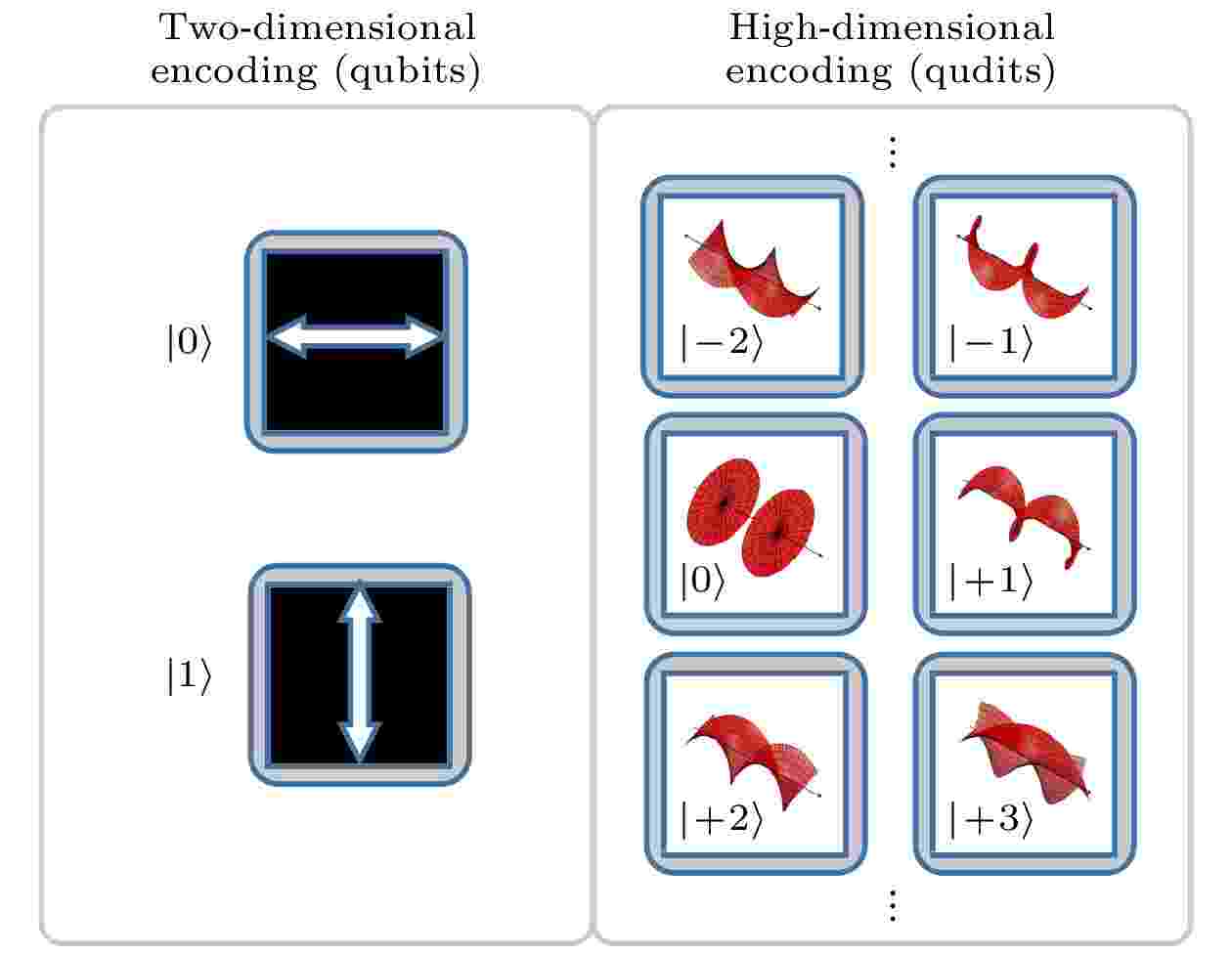
The 90th Anniverary ofActa Physica Sinica·COVER ARTICLE
COVER ARTICLE
2024, 73 (16): 164204.
doi:10.7498/aps.73.20240791
Abstract +
Quantum light sources are one of key devices for quantum information processing, and they are also the important foundation for applications such as in quantum computing, quantum communication, and quantum simulation. Improving the capacity of quantum information coding by using the quantum light source is a major challenge in the development of quantum information technology. Photons with a helical phase front can carry a discrete, unlimited but quantized amount of orbital angular momentum (OAM). The infinite number of states with different OAMs can greatly increase the capacity of optical communication and information processing in quantum regimes. To date photons carrying OAM have mainly been generated by using bulk crystals, which limits the efficiency and the scalability of the source. With the advancement of quantum photonic technology, many significant quantum photonic devices can now be realized on integrated chips. However, creating high-dimensional OAM quantum states at a micro-nano scale is still a challenge. And the research of harnessing high-dimensional OAM mode by using integrated quantum photonic technologies is still in its infancy. Here, the authors review the recent progress and discuss the integrated quantum light sources with OAM. The authors introduce the research progress of using OAM for both single photons and entangled photons and emphasize the exciting work on pushing boundaries in high-dimensional quantum states. This may pave the way for the research and practical applications of high-dimensional quantum light sources.

SPECIAL TOPIC—Precision spectroscopy of few-electron atoms and molecules
COVER ARTICLE
2024, 73 (15): 150201.
doi:10.7498/aps.73.20240554
Abstract +
In the precision spectroscopy of few-electron atoms, the generation of high-intensity metastable helium atoms and helium-like ions is crucial for implementing experimental studies as well as a critical factor for improving the signal-to-noise ratio of experimental measurements. With the rapid development of free-electron laser (FEL) and technology, FEL wavelengths extend from hard X-rays to soft X-rays and even vacuum ultraviolet bands. Meanwhile, laser pulses with ultra-fast, ultra-intense and high repetition frequencies are realized, thus making it possible for FEL to prepare single-quantum state atoms/ions with high efficiency. In this work, we propose an experimental method for obtaining high-intensity single-quantum state helium atoms and helium-like ions by using FEL. The preparation efficiency can be calculated by solving the master equation of light-atom interaction. Considering the experimental parameters involved in this work, we predict that the efficiencies of preparing metastable 23S He, Li+and Be2+are about 3%, 6% and 2%, respectively. Compared with the common preparation methods such as gas discharge and electron bombardment, a state-of-the-art laser excitation method can not only increase the preparation efficiency, but also reduce the effects of high-energy stray particles such as electrons, ions, and photons generated during discharge. Furthermore, combined with the laser preparation technique, the sophisticated ion confinement technique, which can ensure a long interaction time between the ions and laser, increases the efficiency of metastable Li+and Be2+by several orders of magnitude. Therefore, the preparation of high-intensity metastable helium and helium-like ions can improve the measurement accuracy of precision spectroscopy of atoms and ions. A new experimental method, based on FEL, to study the fine structure energy levels 23P of helium, has the potential to obtain the results with an accuracy exceeding the sub-kHz level. Thus, the high-precision fine structure constants can be determined with the development of high-order quantum electrodynamics theory. In order to measure energy levels with higher accuracy, a new detection technique, which can reduce or even avoid more systematic effects, must be developed. For example, the quantum interference effect, which has been proposed in recent years, seriously affects the accuracy of fine-structure energy levels. If the interference phenomenon of spontaneous radiation between different excited states can be avoided in the detection process, the measurement accuracy will not be affected by this quantum interference effect. High-intensity metastable atoms or ions in chemical reaction dynamics studies also have better chances to investigate reaction mechanisms. In summary, the FEL preparation of high-intensity metastable helium atoms and helium-like ions proposed in this work will lay an important foundation for developing cold atom physics and chemical reaction dynamics.

Abstract +
Absorption imaging is the foundation for quantitative measurements in experiments on ultracold atoms. This technique mainly involves capturing images of both the probing light field and the atom absorption light field. In this process, the unavoidable jitter of the probing light introduces imaging noise of fringe patterns into the atomic optical density distribution OD. In conventional fringe removal algorithms, this type of noise can be normalized by constructing an optimal reference image from multiple reference images that have been actually taken, which shares similar fringe patterns to an absorption image (Fig. (a)). Although this method works well in the region without atomic signal, they often overlook the modulation of the noise signal due to atomic absorption effects, leading to persistent residual fringes on the atom clouds. This problem becomes more pronounced with atomic density increasing. Here, we propose an enhanced fringe removal algorithm that takes into account the effects of atomic absorption, and actively modulates the intensity of the noise signal in the reference image constructed by conventional fringe removal algorithms (Fig. (b)), effectively preventing the residual fringes from forming, thus significantly improving the signal-to-noise ratio of the atomic images. When applied to the absorption imaging of homogeneous Fermi gases with high density, as shown in Fig. (d), this new algorithm successfully reduces the relative standard deviation of optical depth characterizing atomic density fluctuations by approximately 37%, which is about 3 times the relative standard deviation by conventional algorithm. Three subgraphs in Fig. (e) show the optical depth distribution at corresponding data points labeled by square boxes in Fig. (d). Furthermore, we also use this technique to quantitatively determine the second sound in the unitary Fermi superfluid of6Li atoms. Compared with conventional fringe removal methods, our new algorithm increases the correlation function’s contrast of the density wave nearly 4 times, therefore enhancing the intensity of the density response spectrum by approximately 15% with half the measured standard error, paving the way for quantitatively determining the speed and attenuation of the second sound. These results demonstrate that the enhanced fringe removal algorithm not only effectively suppresses fringe noise, but also facilitates the identification and detection of important physical phenomena in high-density atomic systems, such as some collective excitations and new quantum phases.

The 90th Anniverary ofActa Physica Sinica·COVER ARTICLE
COVER ARTICLE
2024, 73 (13): 138701.
doi:10.7498/aps.73.20240592
Abstract +
A comprehensive description of the protein should include its structure, thermodynamics, and kinetic properties. The recent rise of cryogenic electron microscopy (cryo-EM) provides new opportunities for the thermodynamic and kinetic research of proteins. There have been some researches in which cryo-EM is used not only to resolve the high-resolution structure of proteins but also to analyze the conformational distribution of proteins to infer their thermodynamic properties based on data processing methods. However, whether cryo-EM can be used to directly quantify the kinetics of proteins is still unclear. In this work, an ideal protein system, cyanobacterial circadian clock protein, is selected to explore the potential of cryo-EM used to analyze the non-equilibrium process of proteins. Previous research has illustrated that cryoelectron microscope can be used to infer the thermodynamic information about the KaiC protein such as the inter-subunit interaction within the hexamers. Herein, we extend the equilibrium Ising model of KaiC hexamers to a non-equilibrium statistical physics model, revealing the properties of the non-equilibrium process of KaiC hexamers. According to the non-equilibrium model and previous biochemical research, we find that the intrinsic properties of KaiC protein allow its non-equilibrium conformational distribution to be measured by cryo-EM.
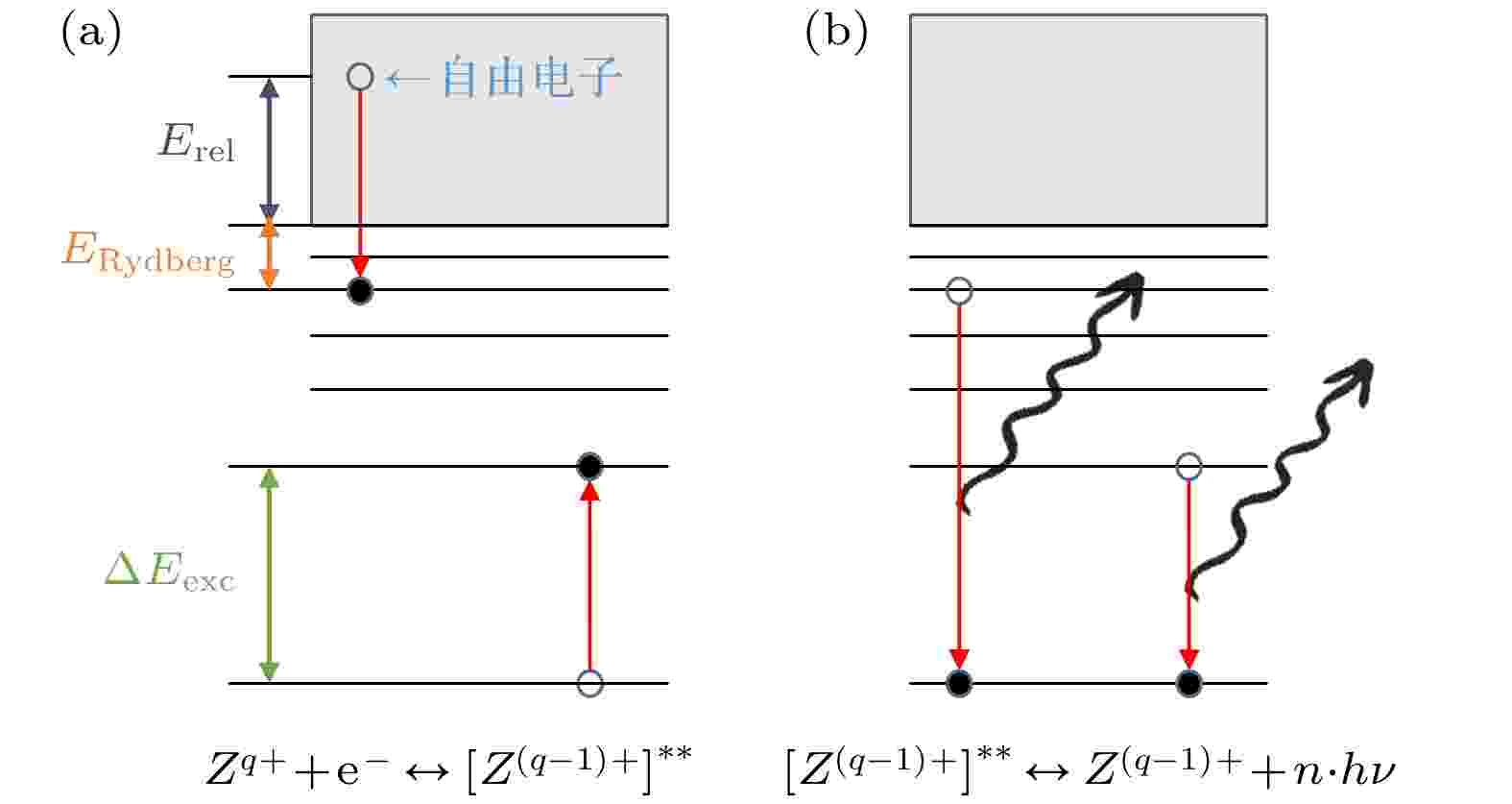
Abstract +
The experimental study of precision spectroscopy of dielectronic recombination (DR) of highly charged ions is not only important for astronomical plasma and fusion plasma, but also can be used as a new precision spectroscopy to test the strong-field quantum electrodynamic effect, measure isotope shift, and extract the radius of atomic nuclei. An specially designed electron beam energy detuning system for electron-ion recombination precision spectroscopy experiments has been installed on the heavy ion storage ring CSRe in Lanzhou, China, where the electron-ion collision energy in the center-of-mass system can be detuned to 1 keV, and an independently-developed plastic scintillator detector and multiwire proportional chamber detector have been installed downstream of the electron cooler of the CSRe for detecting recombined ions. The multiwire proportional chamber detector has the ability to non-destructively monitor the profile of the ion beam in real-time while acquiring the recombined ion counts, providing guidance for optimizing the ion beam. On this basis, the first test experiment on dielectronic recombination of Kr25+ions is carried out at the CSRe, and the dielectronic recombination rate coefficients in a range of 0–70 eV in the frame of center-of-mass are measured. In order to fully understand the experimental results, we calculate the dielectronic recombination rate coefficient of the Kr25+ion by using the flexible atomic code (FAC) and make a detailed comparison with the experimental result, showing that they are in good agreement with each other, and only the resonance energy values of the two resonance peaks at 1.695 eV and 2.573 eV are significantly different. In addition, the DR resonance energy values and intensities are obtained by fitting the experimental results in a range of 0–35 eV, and we find that the transition 3s→4l (∆n= 1) contributes significantly to the experimental spectral lines. Furthermore, we compare the plasma rate coefficients derived from the DR rate coefficients with those derived from the AUTOSTRUCTURE and FAC theories, which differ by 20 percent in a temperature range less than 106K. The experimental results show that the DR experimental platform of the CSRe has very good stability and reproducibility, and can provide support for the future DR experiments of highly charged ion, i.e. for testing strong-field quantum electrodynamics effect and measuring the properties of atomic nuclei.
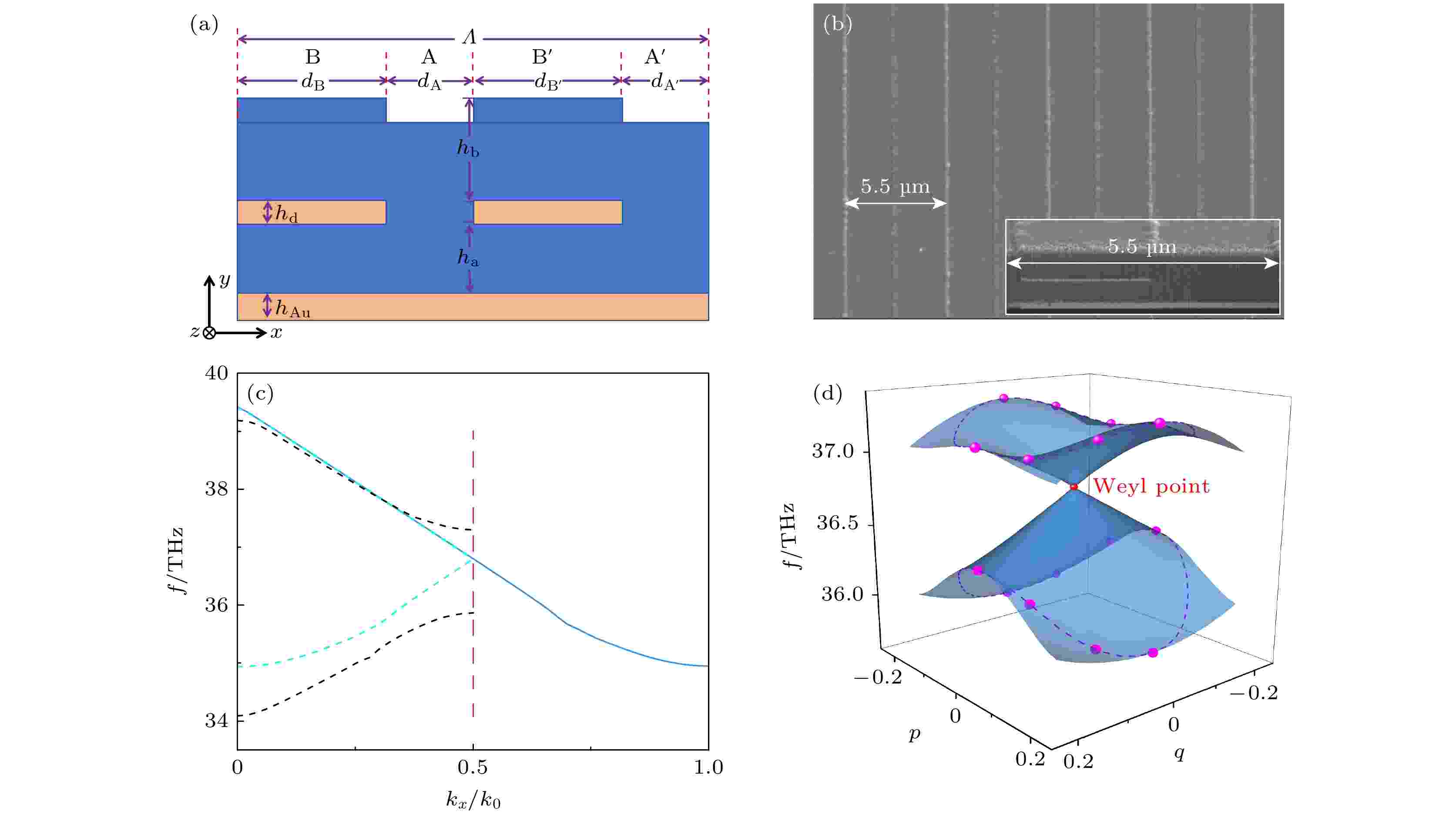
The 90th Anniverary ofActa Physica Sinica·COVER ARTICLE
COVER ARTICLE
2024, 73 (11): 117802.
doi:10.7498/aps.73.20240512
Abstract +
Blackbody emission such as the emission from incandescent sources usually possesses a broadband emission spectrum covering the whole infrared wavelength range. Most of emission energy goes into the unwanted infrared range and consequently causes low emission efficiency. Recently, metasurfaces with two-dimensional subwavelength artificial nanostructures have been widely studied due to their flexibility in modulating optical properties, thus providing an ideal platform for controlling thermal emission. The use of synthetic dimension methods in metasurfaces has opened up new avenues for fine-tuning thermal emission, especially highlighting the physical properties beyond traditional three-dimensional systems and rich topological physics. Although it is theoretically possible to explore physical phenomena through complete three-dimensional structures, such structures are difficult to construct in practice. In contrast, studying one-dimensional system or two-dimensional system is more feasible and efficient. The synthetic dimension approach introduces the possibility of manipulating intrinsic degrees of freedom in photon systems by introducing structural or physical parameters. In this work, we propose utilizing synthetic dimension methods to achieve wavelength-selective thermal emission. Firstly, we construct synthetic Weyl point in a superlattice model and validate it theoretically. Subsequently, experimental characterization of synthetic Weyl cones is conducted by using angle-resolved thermal emission spectroscopy (ARTES). The experimental results demonstrate that we can achieve reasonable wavelength-selective thermal emission while suppressing emission at other wavelengths as much as possible. This is essential for practical infrared applications such as thermalphotovoltaics and thermal management devices.
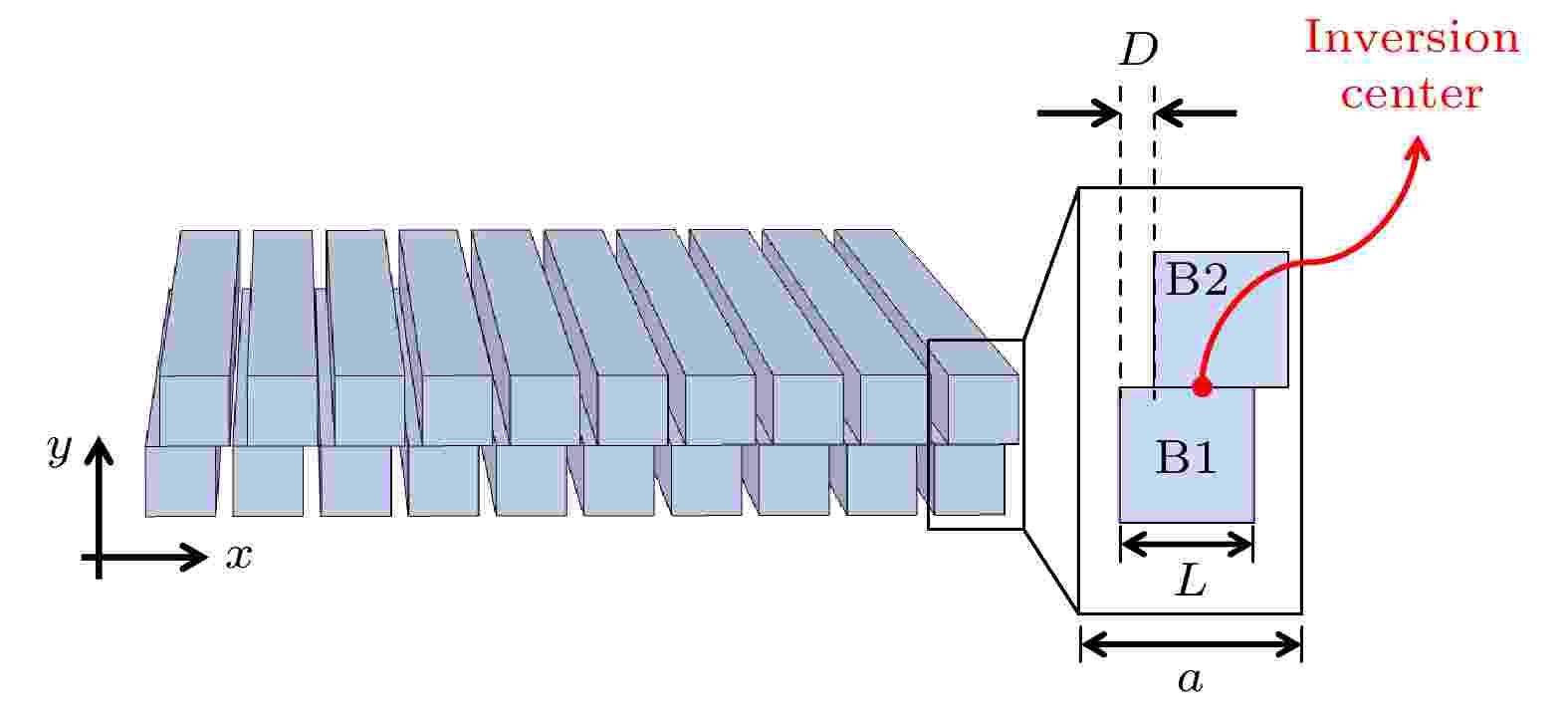
Abstract +
Underwater acoustics has wide applications in underwater communication, underwater positioning, underwater navigation, and so on. Inspired by the concept of topological physics, the study of topological states in waterborne phononic crystals provides a brand-new way for innovatively controlling underwater waves, which has both basic research value and important application prospects. In this work, we design a one-dimensional bilayer iron grid waterborne phononic crystal to realize a synthetic two-dimensional Dirac point by considering the relative lateral translation between the two layers as a synthetic dimension. Through changing the relative lateral translation, the double degenerate band opens a gap, which is characterized by the valley Chern number. As the band gap opens, closes and reopens, the bulk band undergoes a band inversion, that is, a topological phase transition from one valley topological phase to another. At the interface formed by two phononic crystals with distinct valley topological phases, the valley Chen number ensures the deterministic existence of the interface state. Experimental measurements are in good agreement with numerical simulations, both showing the bulk bands of waterborne phononic crystals at different valley topological phases and the interface state dispersion between them. The waterborne phononic crystal proposed in this work has a simple structure. With the help of the concept of synthetic dimension, it provides an effective way to study the topological properties of high-dimensional systems in low-dimensional real space systems, and gives new ideas for designing topological functional underwater acoustic devices. In addition, we can expand the real space system to two or even three dimensions, and introduce more synthetic dimensions to study the topological states and associated transport characteristics of higher-dimensional systems.
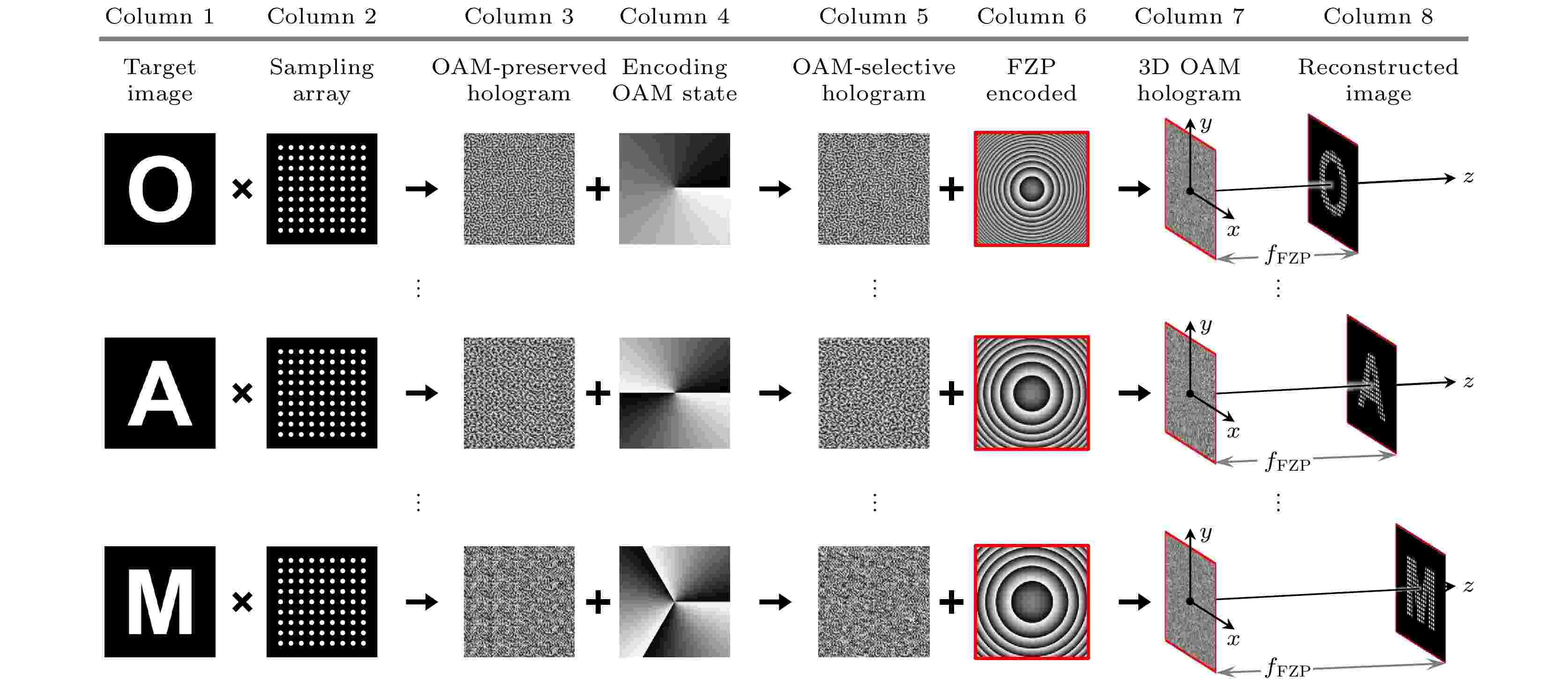
Abstract +
The degree of freedom of orbital angular momentum of light has been used as a new information carrier in optical holographic information processing technology. However, current research on orbital angular momentum holography mainly focuses on two-dimensional orbital angular momentum holography, where the reconstructed two-dimensional holographic image is located in a certain plane in three-dimensional space. How to further implement three-dimensional spatial orbital angular momentum holographic technology and use it to increase the information capacity of holographic communication is still a blank. Here, we implement three-dimensional spatial orbital angular momentum holographic technology based on the degrees of freedom of orbital angular momentum and the positional degrees of freedom of reconstructed two-dimensional images in three-dimensional space. In other words, in the three-dimensional spatial orbital angular momentum holography, the acquisition of the target object image requires not only the correct orbital angular momentum state used for decoding, but also the correct spatial position where the object’s image is detected. In addition, we further investigate the three-dimensional spatial orbit angular momentum holographic multiplexing technology and point out that this multiplexing technology can be used for information encryption. Compared with traditional two-dimensional orbital angular momentum holography, three-dimensional spatial orbital angular momentum holography uses an additional degree of freedom. Therefore, the encryption scheme based on three-dimensional spatial orbital angular momentum holographic technology can further improve the security level of information. Our simulation results and experimental results have verified the feasibility of three-dimensional spatial orbit angular momentum holographic technology and three-dimensional spatial orbit angular momentum holographic encryption technology.
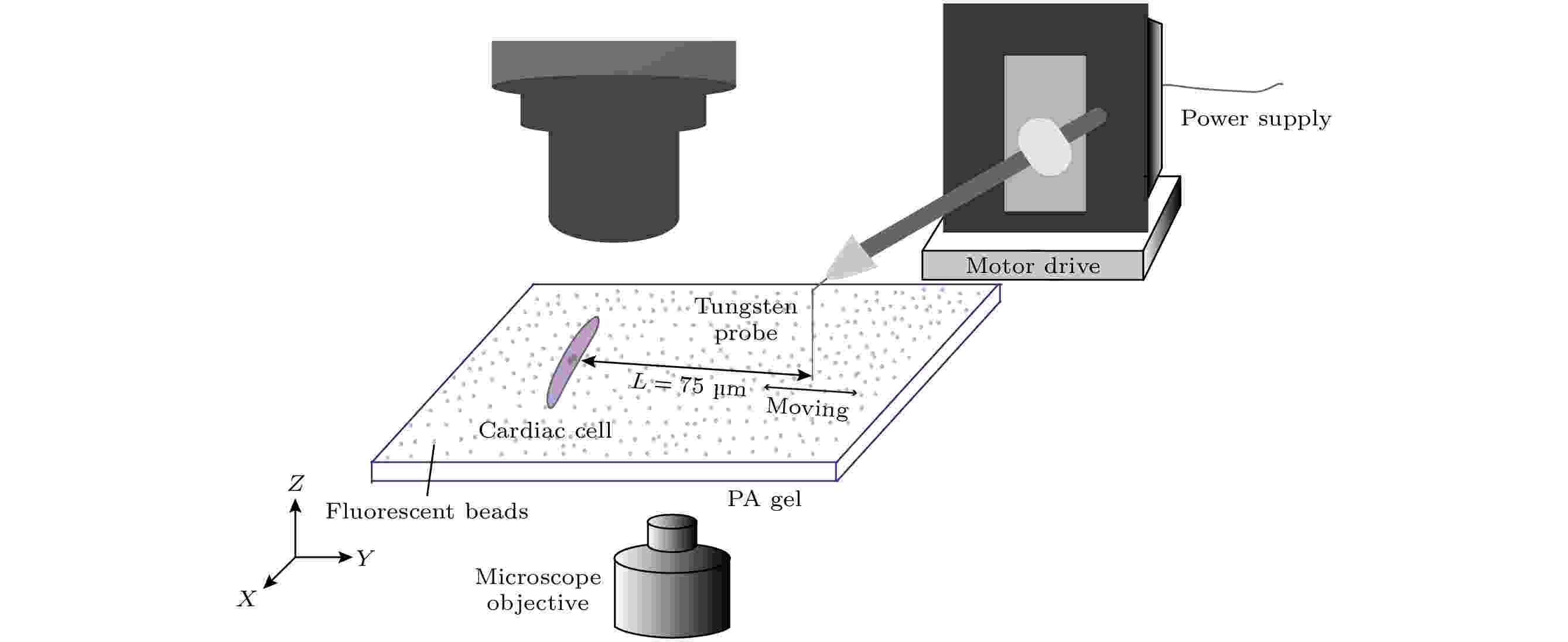
Abstract +
The mechanical behavior of cardiomyocytes plays an essential role in maintaining life and health. It is traditionally believed that both electrical signals and chemical signals modulate the cardiomyocytes behaviors. Recent discoveries have elucidated that the physical cues of microenvironment can regulate cell activities such as proliferation, spreading, migration, and differentiation. However, there is still limited research on regulating cardiomyocytes beating through mechanical force. Herein we prepare different polyacrylamide gels coated with different cell adhesion ligand proteins to simulate the physical microenvironment of cardiomyocytes. Then the mechanical loading forces are loaded by using a tungsten probe to stretch elastic hydrogels which can emulate the mechanical oscillations induced by the beating of adjacent cardiomyocytes. We investigate the responsive behavior of cardiomyocytes to external mechanical oscillations within various physical microenvironments. Firstly, we load 1 Hz mechanical oscillation on the matrix (E= 11 kPa) with different kinds and concentrations of ligands (0, 5, 20, 100 μg/mL) to stimulate cardiomyocytes and observe their mechanical response behavior. Our findings indicate that all kinds of ligands including Laminin, Fibronectin and Collagen I , can mediate the cardiomyocytes response to extrinsic mechanical oscillatory stimuli, which might be due to distinct mechanisms of mechanical force coupling (Fig. (b)). This suggests that mechanical force signals can regulate the beating of cardiomyocytes through matrix-ligand-cell signaling pathway, thereby inducing intercellular coupled oscillations for rhythmic control of cardiomyocytes. Cardiomyocytes cultured on the matrix coated with 20 μg/mL Laminin show the highest and most stable response fraction. We hypothesize that there exist dual force transduction pathways for Laminin binding to integrin and dystrophin glycoprotein complex (DGC) (Fig. (a)). We further analyze the cardiomyocytes behaviors under mechanical oscillation with different values of substrate stiffness (E= 1.8, 11, 27 kPa) and concentrations of Laminin (0, 5, 20, 100 μg/mL). We find that cardiomyocytes cultured on 1.8 kPa coated with 20 μg/mL Laminin show the highest response fraction (Fig. (c)). Our results demonstrate that the stiffness of substrate, the type and density of cell adhesion ligands, as well as the strength and rhythm of the mechanical signals can synergetically affect the cardiomyocytes responses to external mechanical stimulations, which provides the foundation for understanding the diseases such as cardiac arrhythmias and heart failure following myocardial infarction.
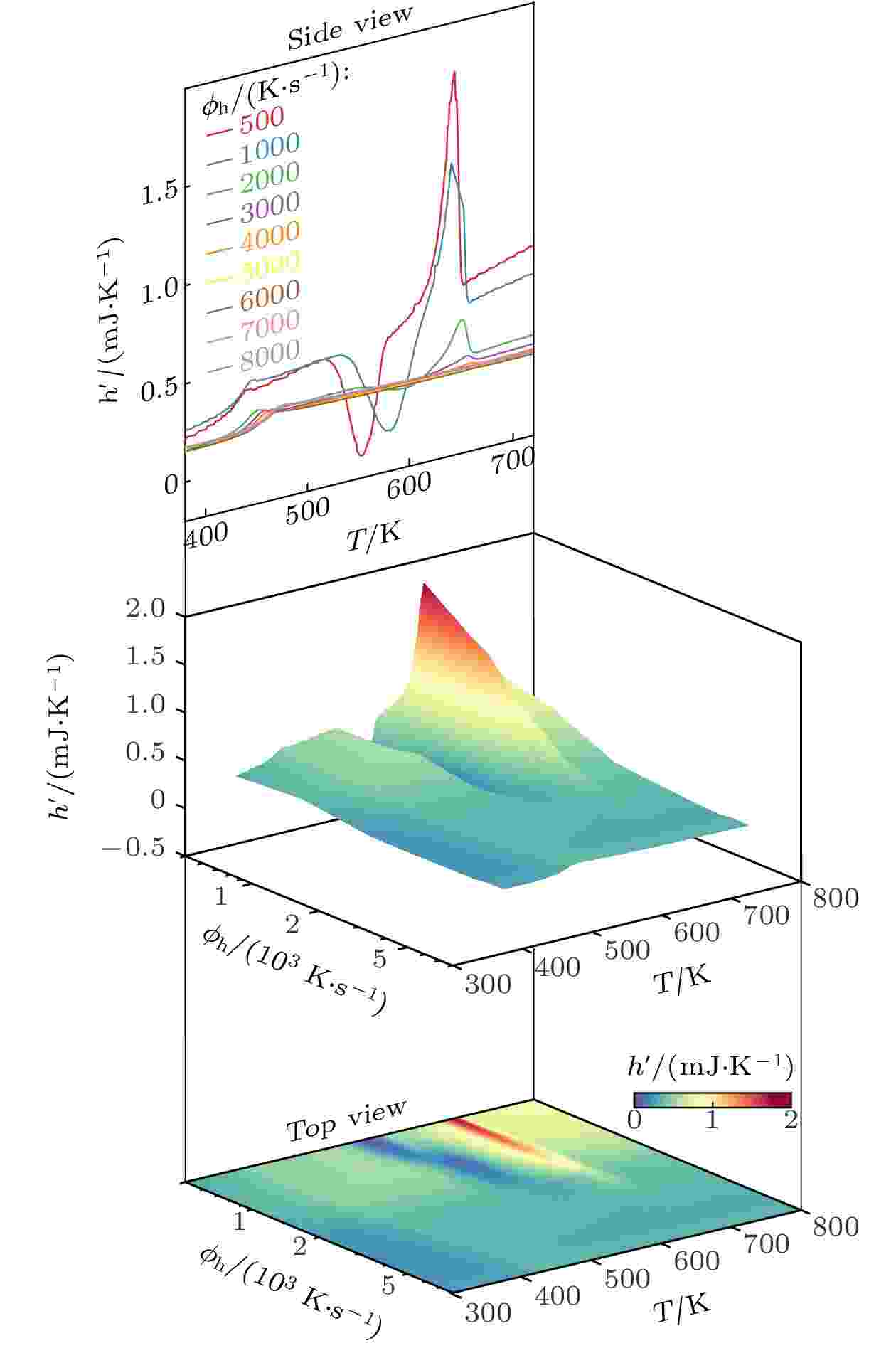
Abstract +
Ultrafast differential scanning calorimetry is the third-generation technique of differential thermal-analysis. It can fast heat up to 60000 K/s or fast cool down to 40000 K/s, so its temperature-changing rate spans five orders of magnitude, and permit repeating experiments on compounds or materials with a melting point lower than 1000 ℃. The unique rate of temperature change allows it to record structural changes of sample in milliseconds, producing a significant number of data. A “top-view” graph is suggested in this study for data analysis. It basically projects the heat flow onto a plane of variables such as temperature, rate or time and uses color contrast to describe the intensity change of heat flow. The issues with “side-view” graphs, where it is a challenge to discern rate or time from several curves, are successfully resolved by this novel technique. It can also realize a comparison of the kinetics among several co-existing physical events. Using an Au-based metallic glass as an example material, this work collects the data from four “side-view” graphs in literature, replots the data on “top-view” graphs, and compares pros and cons. Any substance or material to be examined by utilizing fast differential scanning calorimetry can be examined through using the “top-view” approach. It is useful not only for data analysis but also for constructing processing maps for novel materials, finding new structural transitions, and examining the kinetic behaviors of physical phenomena. All the data presented in this paper are openly available at https://doi.org/ 10.57760/sciencedb.j00213.00012.

- 1
- 2
- 3
- 4
- 5
- ...
- 11
- 12








